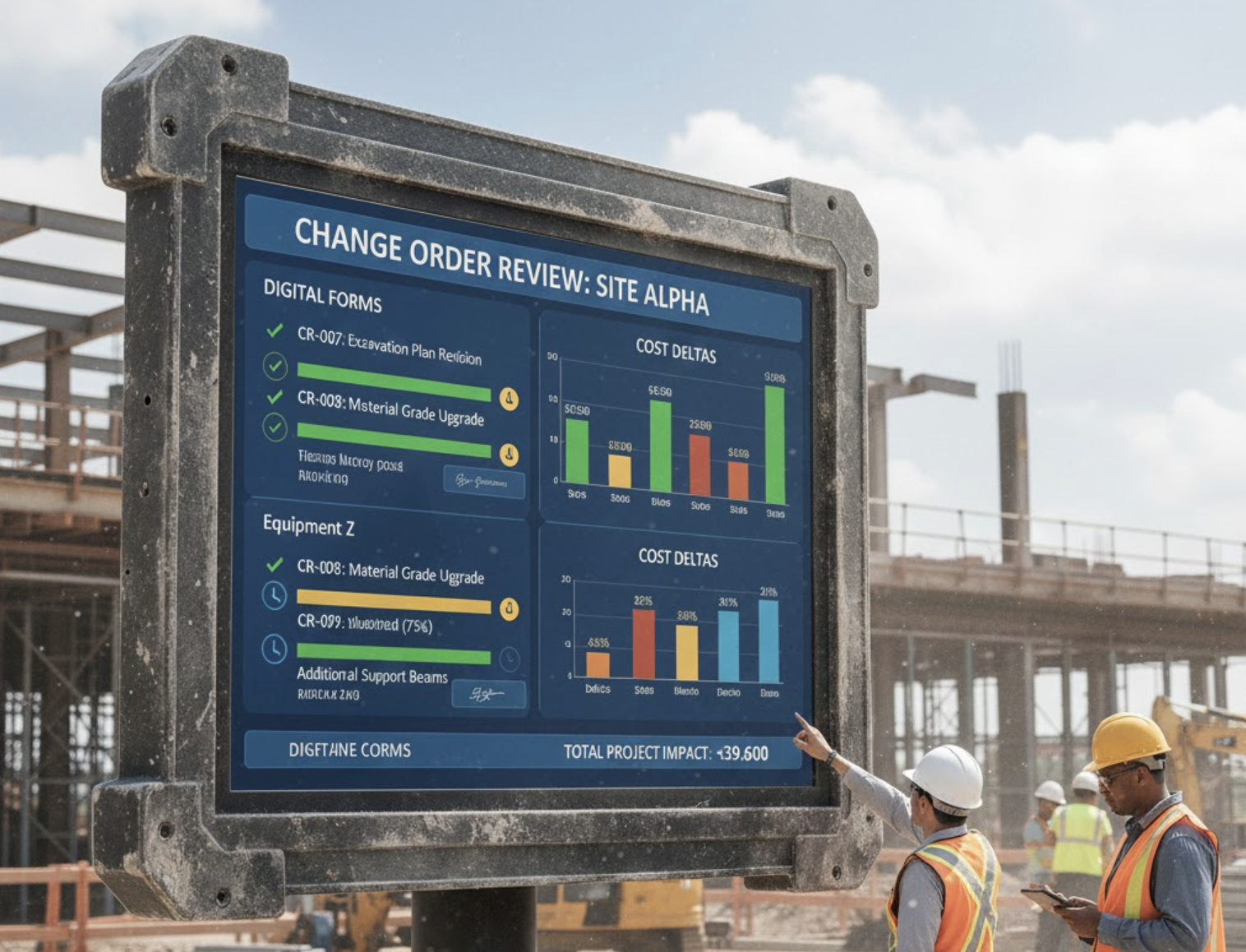How a Digital Audit Trail Helps with Authority Submissions
A digital audit trail serves as a critical component in modern construction management systems, enhancing transparency and compliance. With the integration of such tools, construction firms can streamline their authority submissions process, ensuring adherence to regulatory standards. Understanding how a digital audit trail functions and its implications can transform project management practices.
Definition and Purpose of a Digital Audit Trail
A digital audit trail is a comprehensive, immutable log that records every action, event, or change within a construction management system. This critical documentation provides insight into who performed specific actions, the timing of those actions, and any modifications made to various datasets. By ensuring data integrity, a digital audit trail is particularly crucial for regulatory submissions, making it easier for firms to comply with industry standards.
Key Benefits
Enhanced Accountability and Transparency
The necessity for accountability in construction projects cannot be understated. A digital audit trail can deliver a clear and detailed history of all interactions with documents and systems, thereby enhancing accountability and transparency within the organization. This aspect becomes vital for maintaining trust and ensuring that all actions are traceable.
Improved Operational Efficiency
In a construction environment, efficiency is paramount. Automating the logging of actions and changes with a digital audit trail minimizes the manual effort required for tracking and documenting activities. This streamlining of the audit process results in significant time savings and operational efficiency. Construction management software that incorporates a digital audit trail not only simplifies the process but also enhances productivity by allowing teams to focus on critical tasks.
Regulatory Compliance
With the construction industry facing stringent regulatory oversight, digital audit trails become foundational in ensuring compliance. They enable firms to maintain accurate and organized documentation that is easily accessible for audits and reviews. This capability is crucial for avoiding non-compliance issues and facilitating smoother compliance processes.
Error and Fraud Detection
Another significant benefit of digital audit trails is their ability to quickly identify discrepancies, errors, or fraudulent activities. Organizations equipped with well-maintained audit trails can rapidly investigate and rectify such issues, thereby enhancing overall data integrity. This detection capability serves as a backbone for risk management in construction operations.
Enhanced Security
Security is always a top concern in construction management, especially regarding sensitive documentation. Digital audit trails act as a deterrent against unauthorized access and alterations to documents. Employees are more likely to adhere to established protocols, thus mitigating risks associated with data breaches by knowing their interactions are logged.
Use Cases in Construction Management
Compliance with Industry Regulations
In the construction industry, adhering to industry regulations necessitates detailed digital records. Digital audit trails play a pivotal role in facilitating compliance by providing clear, accessible documentation reflecting all activities and changes throughout a project’s lifecycle. For organizations utilizing advanced construction document management systems, maintaining accurate records is simplified.
Streamlined Audits and Reviews
Efficient audits begin with a clear and accessible digital audit trail. Auditors can swiftly verify document trails and compliance, thereby saving time and reducing the effort required to produce necessary evidence. Digital audit trails minimize the complexity typically associated with audits, enhancing the reliability of results.
Reporting and Documentation
Compiling information for submitting reports to regulators can be a daunting task. Digital audit trails simplify this process, making it easier to collect necessary documentation and respond to requests efficiently. By streamlining the compliance procedure, the administrative burden on teams is significantly reduced, allowing them to focus on their core deliverables.
Best Practices
Implementation of Robust Systems
To leverage the benefits of digital audit trails effectively, it’s essential to implement advanced construction management systems (CMS) tailored for this purpose. These systems must be designed to automatically capture changes and timestamps, paving the way for a clear and immutable audit trail that is critical for regulatory compliance.
Regular Monitoring and Updates
Maintaining an effective digital audit trail involves regular monitoring and updates to ensure that the information remains current and accurate. Periodic reviews are important to confirm that the system is functioning appropriately and that all necessary data is being diligently captured.
Training and Awareness
Training team members on the importance of digital audit trails is vital for maintaining data integrity. Organizations should emphasize awareness around proper logging practices, which ensures that all interactions with documents are appropriately captured within the system. This culture of accountability contributes significantly to organizational efficiency.
Emerging Innovations
Electronic Delegation of Authority (DOA)
Integrating electronic DOA systems with digital audit trails can vastly enhance task delegation and authorization processes. Such innovations minimize errors associated with manual data entry while maximizing the accessibility of logs for authorized personnel. The introduction of AI-driven construction management solutions further supports relevant proposals.
Integration with Other Technologies
To maximize effectiveness, digital audit trails should integrate seamlessly with other technologies like eSignatures and real-time data updates. This synergy ensures that all document-handling processes are securely and transparently recorded, contributing to a more cohesive operational environment.
How Zepth Can Help
Zepth offers comprehensive solutions for establishing robust digital audit trails that significantly simplify the audit process. By providing a complete history of document handling and system usage, Zepth enhances accountability, improves operational efficiency, and ensures compliance with regulatory standards. Its document management tools are tailored to automatically record changes and timestamps, establishing the critical audit trails needed for authority submissions.
With Zepth’s digital audit trail capabilities, construction firms can significantly enhance their authority submissions through compliance, efficiency, and transparency. This ultimately reduces the risk of legal liabilities while enhancing overall operational performance. For more information on how Zepth can assist with digital audit trails, visit Zepth’s overview page.




